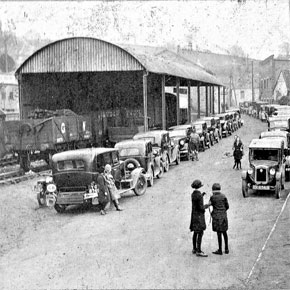Watchet's Heritage - The Old Goods Shed

This building now serves a number of individual purposes, but historically, the main building that contains the Boat Museum was once a goods shed, built when the railway first arrived in Watchet in 1862. The footbridge did not appear until 1874 when the line was extended to Minehead and was originally a wooden structure.
The Boat Museum is dedicated to a particular flat-bottomed boat known locally as the 'flatner' and is particularly associated with a local family, the Besleys. Apart from constructing these fascinating craft, they were also the principal rope-makers for Watchet on this actual spot.
With the arrival of the railway, they were forced to relocate to a new site a little above the town and business continued as before. When the distinctive edifice opposite, easily identified as the historically important Council Chambers, was lost to the town, the officers of the council were given new premises within the building.
An interesting feature above the Court House is the town clock which was paid for by public subscription and rather than numerals, they are replaced with letters indicating the present Queen's coronation. The house to the left of the old chambers was once all part of the same building and thatched - significantly it was known in the nineteenth century as Myrtle Cottage and was the home and studio of Watchet's pioneer photographer James Date who recorded much of the town's history from 1860 to the late 1870s.
The old Bus Stop immediately to the side of the museum is a community-run book exchange and is much used. The newer part of the building now serves as the town's Visitor Centre, replacing the original much loved volunteer Tourist Office located on the Esplanade. It also houses the new offices of the town clerk. The town council now meets in the Visitor Centre Gift Shop.
For further information about the town as a whole,
please visit the home page or click
Here
This page is provided by Watchet Conservation Society with the help of Watchet Chamber of Trade
and with funding from Somerset West & Taunton Council's High Street Emergency Fund.
Text and history provided by Nick Cotton
